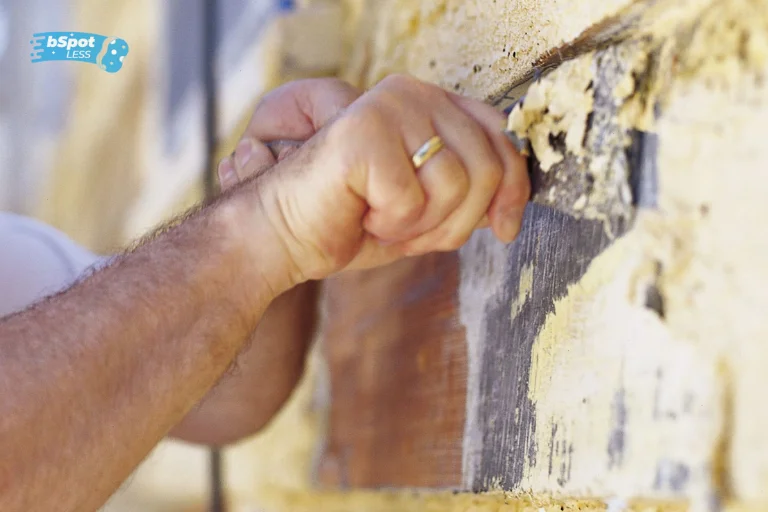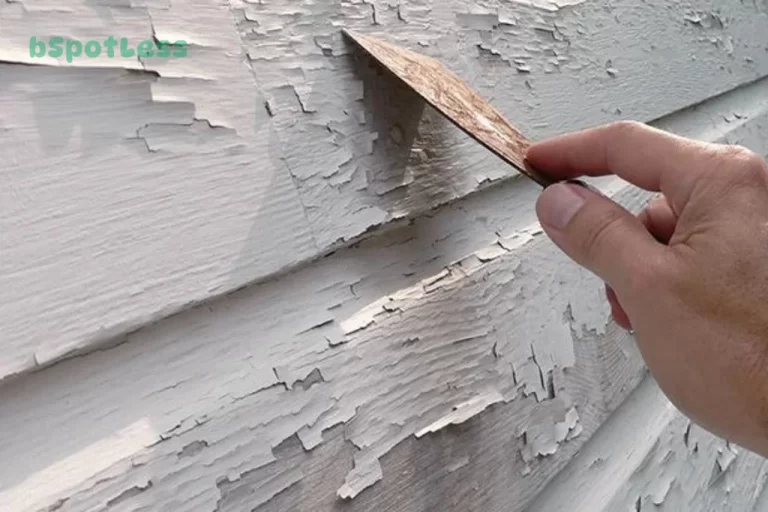Are you dealing with old wood surfaces that may have been painted with lead-based paint? If so, this blog post is for you! We’ll provide an overview of the best way to remove lead paint from wood, and discuss safety tips to keep in mind when doing so. Read on for more information and find out how you can safely tackle this project.
Gather Your Supplies
It’s important to make sure you have the right supplies before you begin working on removing lead paint from wood. You’ll need lead-cleaner, detergent, a scrub brush, wet-dry sandpaper, a power sander if available, plastic sheeting and tape, drop cloths, and a respirator. Additionally, you’ll need to have a container to dispose of any toxic waste. Once you have all of your supplies gathered, you can start testing the paint to determine if it is indeed lead-based.
Test the Paint
Before you start the abatement process, it is important to test the paint to make sure it contains lead. This is especially important if you are dealing with an older home or structure. You can test for lead using a lead test swab, which can be purchased at your local hardware store. Once you have identified that the paint does contain lead, you can move on to the next step in the abatement process.
Prepare the Area

Once you’ve gathered your supplies and tested the paint, it’s time to prepare the area. Start by wet scraping wood and siding and misting and sanding, using wet-dry sandpaper or a wet sanding sponge. If you have a power sander, attach it to a vacuum cleaner for dust control. Make sure to protect the surrounding project area from potential contact with lead paint. Once everything is ready, fill a bucket with warm water and add a suitable lead paint cleaner like BLUE BEAR Lead Out Lead-Based Paint Remover.
Remove Loose Paint
Now that the area has been prepared and the paint tested, it’s time to start removing the loosened paint. Wet scraping is the best way to remove loose paint from wood surfaces. This involves wetting the surface with a spray bottle and scraping off the paint with a putty knife or a scraper. For large surfaces, a power sander may be used but extra care should be taken to avoid damaging the wood. If done properly, this process will remove most of the loose paint without creating dust or debris.
Sand the Paint
After preparing the area and removing any loose paint, it is important to sand the paint that is left. This will help ensure that any lead paint that is still attached to the wood is removed. Wet sanding is the best way to do this, as it prevents lead dust particles from becoming airborne. To wet sand, you will need a wet-dry sandpaper or a wet sanding sponge. If you have a power sander, you can use it, but make sure it is attached to a vacuum cleaner to help reduce the amount of dust released into the air. After sanding, make sure to clean the area completely with lead-cleaner, detergent, or a scrub brush.
Clean the Wood
Once the lead paint has been sanded down, it’s important to make sure the surface is clean before applying a lead paint remover. This can be done by using a lead-cleaner, detergent, or a scrub brush. Ensure all dust and debris is thoroughly removed to get the best result from a lead paint remover. Once the wood is clean, it’s time to apply a lead paint remover.
Apply a Lead Paint Remover
Before applying a lead paint remover, make sure to take all necessary safety precautions. Wear protective clothing such as a respirator, goggles and gloves. Open windows, turn on fans and use a drop cloth to protect the area from potential drips. Once the area is prepared, apply a lead paint remover according to the manufacturer’s instructions. Be sure to carefully follow all directions for use, as some products may require multiple applications or overnight waiting periods before scraping off the remaining paint.
Scrape Off Remaining Paint
Now that you’ve applied the lead paint remover, you’re ready to scrape off any remaining paint. The best way to do this is with a wet scraper. Be sure to wear protective gear when scraping, as lead dust and particles may still be present. Wet scraping will help minimize the amount of dust in the air and prevent it from entering your lungs. Once you’ve scraped off the remaining paint, it’s time to give the wood one last clean.
Clean the Surface Again
Now that the lead paint has been removed, it is important to clean the surface again. Depending on the type of surface you are working with, you can use a lead-cleaner, detergent, or a scrub brush to clean the area. Once everything is clean, it is important to dispose of any toxic wastes in the proper manner.
Apply a Sealant to the Wood
Once you have removed all of the lead paint and cleaned the surface, it is important to apply a sealant to ensure that the wood is properly protected. This is especially important if the wood is going to be exposed to the elements. The sealant will help protect the wood from moisture, dust, and other potential contaminants. It will also add an additional layer of protection against lead paint, making sure that it stays off your wood.

